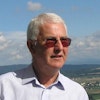Study Notes
GCSE Geography | Opportunities in the Western Desert (Hot Deserts 5)
- Level:
- GCSE
- Board:
- AQA, Edexcel, OCR, Eduqas
Last updated 17 Oct 2024
The Western Desert in the USA is made up of three different hot deserts - the Mojave Desert, part of the Sonoran Desert and part of the Chihuahuan Desert. The Western Desert is in south-western USA - it covers 200,000 km² and spans parts of California, Nevada, Utah, Arizona and New Mexico. Population density in the desert is low - most people live in the cities such as Phoenix in Arizona and Las Vegas in Nevada.
Despite the harsh environment, the Western Desert offers many opportunities for economic development.
Mineral extraction in the Western Desert
The Western Desert has an abundance of valuable minerals, such as copper, uranium, lead, zinc and coal. The Sonoran Desert has experienced copper mining for hundreds of years - in the past this was relatively small-scale but the discovery of water supplies below ground has meant that large-scale opencast mining can take place.
There have been issues of conflict with other economic activities, including tourism and farming, which has meant that some minerals haven't been fully exploited. Environmental concerns have also stopped some energy developments, for example plans for uranium mining close to the Grand Canyon were stopped following a campaign by local indigenous people who voiced their concerns about the risk to endangered species of wildlife and the contamination of drinking water supplies. Uranium is used in nuclear power plants to generate energy.

Energy development in the Western Desert
The Western Desert has long sunny days so it a great location for generating solar energy, with many solar farms planned across the region. One of the world's biggest is the Ivanpah Solar Electric Generating System, in the Mohave Desert, 64 km south-west of Las Vegas. Sunlight is focused by 173,000 heliostat mirrors, each measuring 7m², onto three 138 m high solar power towers. The heat from the sun generates steam to drive turbines that generate electricity for 140,000 homes. The project cost $2.2 billion and covers 360,000 hectares of land.
The vast open space means that the landscape is exposed with nothing to reduce windspeeds - as a result the desert is home to the Alta Wind Energy Center, also known as the Mohave Wind Farm. It has 600 turbines and is the USA's largest wind farm, and the third largest onshore wind energy project in the world.
The large rivers running through the region, such as the Colorado River, mean that some communities can get their energy generated by hydroelectric power, such as the enormous Hoover Dam constructed in the 1930s, which led to the formation of the Lake Mead reservoir - a store of water for the area.
There are also many opportunities to exploit fossil fuels in the Western Desert, for example oil drilling has taken place for over a century in Arizona on land owned by the Navajo people. In 1998 the Navajo Nation Oil and Gas Company was established to benefit local Navajo communities, providing hundreds of jobs.

Farming in the Western Desert
Long hours of sunshine make favourable conditions for growing crops, and the fact that the USA is a high income country means that the issue of water supply can be managed through investment into irrigation, using aquifers and canals.
Aquifers are large stores of water trapped below the ground in rocks - this can be used by digging boreholes or wells, and is used to provide irrigation in California for vegetables, lemons and grapes, and therefore a very profitable wine industry.
Canals are used throughout the region for large-scale commercial agriculture, to produce crops such as wheat. In the state of Colorado farmers get 80% of the available water, despite agriculture only contributing 10% of the economy.

Tourism in the Western Desert
Tourism is the region's most important economic activity. There are many tourist attractions in the Western Desert, including...
- National parks, such as the Grand Canyon and Joshua Tree offer wild and spectacular scenery
- The Colorado Museum (in Arizona) which explores the culture and heritage of Native Americans
- The bright lights of Las Vegas - an entertainment hub which attracts over 37 million visitors annually
- Lake Mead and Lake Powell which are visited by over two million people a year, who come for sailing, power boating, water-skiing and fishing

You might also like

World’s Largest Offshore Wind Farm gets Green Light for North Sea
21st February 2015

Cornish wind farm hits 25th anniversary and is set for the next 25
3rd January 2017

There's Energy in Those Mountains
3rd January 2017
Hope for the UK bee population
12th November 2017
Locust swarms across Somalia cause food crisis
3rd February 2020
GCSE Geography | Global Biomes (Ecosystems 4)
Study Notes